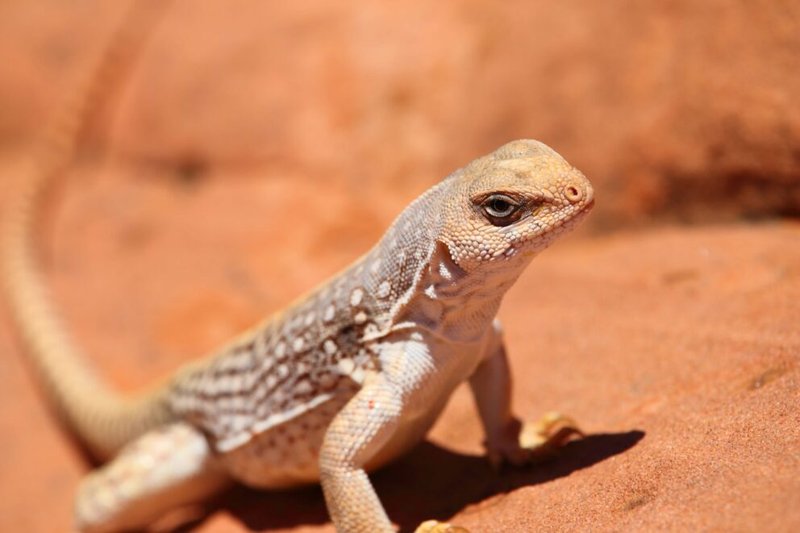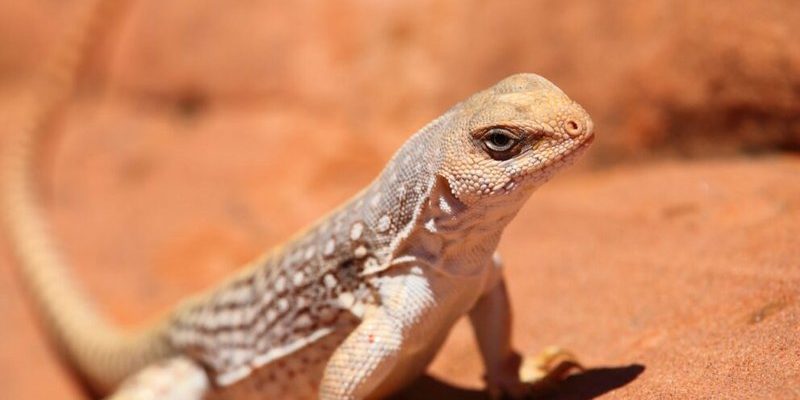
Understanding the Desert Iguana’s Natural Habitat
Desert iguanas thrive in environments that mimic their natural habitat. This includes hot, dry conditions with plenty of sunshine and access to vegetation. In the wild, they spend a good amount of time basking on rocks and hiding among shrubs. When considering whether to keep a desert iguana indoors or outdoors, it’s essential to keep these needs in mind.
Temperature and Light: Desert iguanas require a warmer climate to stay healthy. The ideal temperature range for their habitat is between 80°F to 100°F during the day, with a basking area that reaches about 110°F. If you’re thinking about an indoor setup, you’ll need to invest in a good heat lamp and UVB light to provide proper lighting and temperature.
Humidity Levels: These reptiles are adapted to desert conditions, so they don’t need high humidity. The humidity level in their environment should stay around 10% to 30%. Using a hygrometer can help you monitor these levels, ensuring it doesn’t get too damp or dry.
Diet and Environment: Fresh vegetation is a big part of their diet. Desert iguanas eat a variety of leafy greens and flowers. If kept indoors, you’ll be responsible for providing them with a balanced diet. Outdoors, they can munch on natural flora, and you won’t have to worry about their food source as much.
Can Desert Iguanas Live Indoors?
Absolutely! Desert iguanas can live indoors, but there are some important factors to consider. Keeping them inside means you can better control their environment and ensure they are safe from predators and extreme weather conditions.
Space and Enclosure: Ideally, you’ll want to provide a spacious enclosure. A terrarium that’s at least 4x2x2 feet is a good start. This gives them room to roam and bask. Make sure the enclosure has proper ventilation and is escape-proof.
Creating a Comfortable Environment: Add some hiding spots using wood, rocks, or commercial reptile hides to simulate their natural habitat. This helps them feel secure, reducing stress. Don’t forget to include a basking platform where they can soak up all that artificial sunlight.
Monitoring Their Health: Living indoors requires extra attention to their health. Regularly check their skin for any signs of shedding issues or parasites. A visit to the vet who specializes in reptiles is also a good idea for annual check-ups.
Can Desert Iguanas Live Outdoors?
While desert iguanas can thrive outdoors, this option comes with its own set of challenges. It’s essential to provide a safe and controlled environment outdoors to ensure they stay healthy.
Creating an Outdoor Habitat: If you have a secure, enclosed backyard, you can set up a designated area for your iguana. Ensure the enclosure has walls tall enough to prevent them from escaping and is fortified against any potential predators.
Weather Considerations: Since they are desert creatures, they love warmth and sunshine but don’t fare well in extreme conditions. In regions with harsh winters or heavy rains, it’s crucial to bring them indoors when temperatures drop or storms are on the way.
Natural Behavior: One of the perks of keeping a desert iguana outdoors is that they can exhibit more natural behaviors. They can dig, climb, and bask in the sun as they would in the wild, which can lead to a healthier and happier iguana.
Considerations for Indoor Living
Before deciding to keep a desert iguana indoors, consider the lifestyle changes it entails. They require a certain level of commitment and care.
Time Commitment: Indoor setups require regular maintenance, including cleaning the enclosure and monitoring temperature and humidity levels. You might need to adjust lighting and heat as seasons change.
Interaction and Stimulation: These iguanas can be quite sociable. Regular handling and interaction can help them become friendly and accustomed to their owner. However, too much handling can stress them out, so find a balance.
Budgeting for Supplies: Keeping a desert iguana indoors might mean more upfront costs. You’ll likely need to purchase heat lamps, UVB bulbs, substrate, and a variety of food items. It’s worth budgeting for these necessities to ensure your iguana lives comfortably.
Considerations for Outdoor Living
If you lean toward keeping your iguana outside, there are a few key points to ensure they thrive.
Safety First: Make sure your outdoor enclosure is secure. Since iguanas can dig and climb, a robust fencing system is essential to keep them safe from predators. Watch out for common backyard threats like dogs, raccoons, and hawks.
Seasonal Changes: Be mindful of the seasonal weather patterns in your area. If you live in a place with extreme cold or wet conditions, you’ll need to bring your iguana indoors during those times.
Socialization: Outdoor iguanas can become accustomed to their surroundings, but they may not interact as much with you. Regular, positive interactions when they are outside can help maintain their social skills.
Ultimately, the choice of whether to keep a desert iguana indoors or outdoors depends on your living situation, climate, and personal preferences. Indoors can provide a controlled environment that’s safe and manageable, while outdoors allows for a more natural lifestyle, given the proper setup.
Whichever option you choose, remember that your iguana’s health and happiness are top priorities. As long as you create a suitable environment and stay attentive to their needs, your desert iguana can thrive, whether basking under a heat lamp or lounging in the sun. Just like any friendship, it’s all about understanding and meeting those needs!

